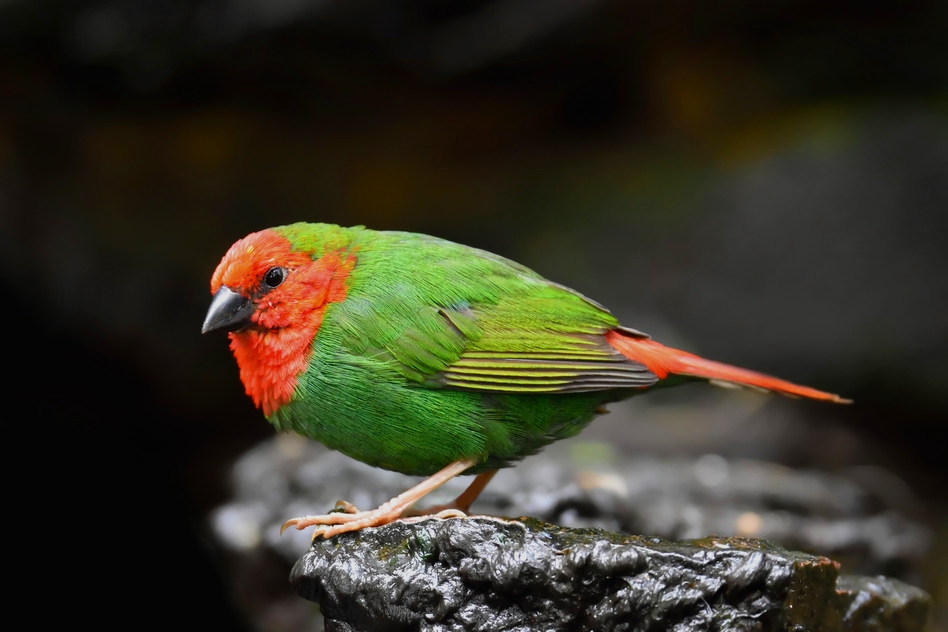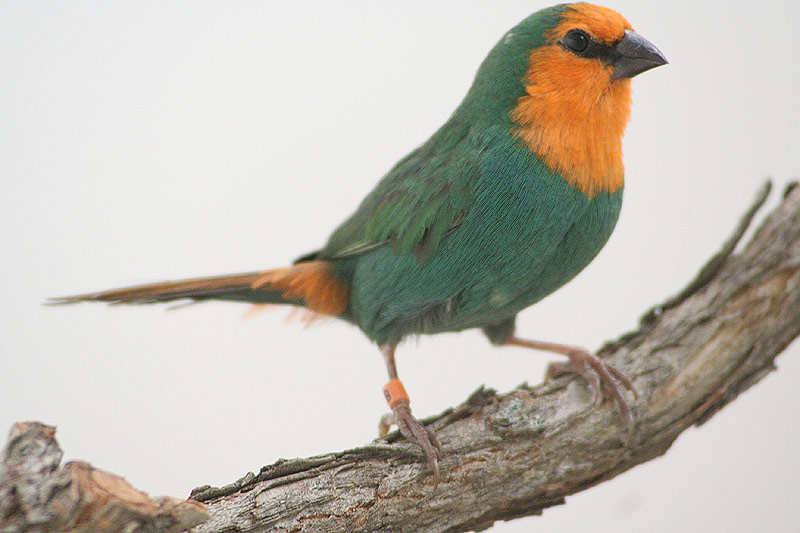The Red-Throated Parrotfinch, known in aviculture as the Red-faced Parrotfinch, is an active and colorful estrildid finch native to the South Pacific nation of New Caledonia. The species naturally inhabits tropical forests and shrub lands, but has adapted well to captivity and is well established in aviaries in Australia and around the world.

Housing & Compatibility
Red-faced parrotfinches can be housed as single pairs, small colonies or as part of a mixed collection of passive finches. They must not be housed with other species of parrotfinch as hybridization can occur. They are generally not considered to be a species suitable for cage or cabinet breeding.
The Red-faced parrotfinch is best suited to a large planted aviary that emulates their natural environment. Palms and ferns are appreciated as hiding places and help to increase the humidity, which is essential for breeding this species.
Diet & Feeding
Seed forms the basis of most finch diets. Unfortunately seed is lacking in many essential vitamins and minerals which must be compensated for by introducing other foods. Green seed heads or sprouted seed increases the nutritional value of seed and is a cheap way to improve your bird’s health.
Red-faced parrotfinches possess a ferocious appetite and are known to be greedy and messy eaters. Their propensity to eat virtually any food is often used by breeders to encourage other species to sample newly introduced foods.
Kale, bok choy, cucumber and finely grated apple, carrot or broccoli are much loved by Parrotfinches. Spinach can also be given, but only sparingly as it can contribute to calcium deficiency. Commercial soft finch food mixes can also be provided for an added nutrient boost, particularly when breeding. These should be given sparingly as Red-face Parrotfinches can be prone to obesity. Live food will be consumed and may be required to achieve strong breeding success.
Birds should never be fed avocado, chocolate, caffeine, onion, alcohol, or anything else on our list of dangerous foods.
Breeding
Red-faced parrotfinches are generally reliable breeders and will nest throughout the year – with best results in Autumn and Spring. They will construct a nest just above ground level in a box or dense shrub, using fine grass and feathers. The hen will lay 3-6 eggs which will be incubated by both parents for approximately two weeks. Young birds will fledge at approximately three weeks of age.
Allowing pairs to produce more than 3-4 clutches will greatly reduce the health and longevity of your birds. Steps should be taken to prevent birds from breeding in the hottest or coldest months.
Sexing
Sexing Red-faced parrotfinches can be challenging – especially for younger birds. The male will generally have a larger and more vividly red face than the female. Males often have a slightly longer tail, though this shouldn’t be relied upon to determine gender. Some aviculturalists rely on DNA sexing or natural pair selection in a large flock to establish true pairs.

Mutations
A number of mutations have been developed in aviculture, most notably pied and sea green.
Health
Due to their excellent appetites, Red-faced parrotfinches are prone to obesity which can result in reduced breeding performance or even death. Live food, fatty seeds and commercial soft foods should be limited – especially outside of the breeding season.
Red-faced parrotfinches are immensely active and spend a great deal of time fossicking at ground level. A strict worm control regime and regular preventative treatment for bacterial and fungal infections is critical to ensure the long-term health of your birds.